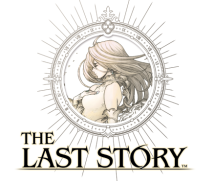1. Directing Again After Eighteen Years
Editor’s note:
this interview was originally conducted on 17th August, 2010.
Thank you very much for taking the time to join me today.
I’m very happy to be here.
Having you join me today for a discussion like this actually feels quite significant. (laughs)
Really? ...Ah! I see what you mean! (laughs)
It’s just that I get the feeling that a lot of people see you as being rather far removed from all things Nintendo.
Yes, you may well be right there.
I think there was certainly a point in the past when that was true. But I really don’t think of you as being somehow distant from Nintendo. In fact, you joined me at the Nintendo DS conference1 when you unveiled ASH2. 1 The event referred to here was the Nintendo DS Autumn Conference held on 5th October 2005. 2 ASH: Archaic Sealed Heat was an RPG released for Nintendo DS in Japan in October 2007. Hironobu Sakaguchi worked as executive producer on the project.
Yes, that’s right.
Now we’ve had the opportunity to work together once again on The Last Story. Could you describe how this project first came about?
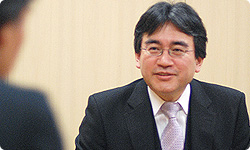
I left Square3 in 2003 and after taking a bit of a break, I began working again and was involved in the development of a number of titles. Then, just as I was finishing up work on them, I came to a point where I was doing a lot of reflection… Well, how can I put this? I felt that I might have been a little out of step with the times. 3 Hironobu Sakaguchi oversaw the Final Fantasy series (from FF I to FF X-2) at Square, now Square Enix.
You’d really go as far as to say you were ‘out of step’?
Well, maybe not out of step. I just felt like I was at a slightly different point from everyone else. As if I was surfing alongside the others, but had ended up riding a different wave from the one I should have aimed for. This project came about just at the moment when I was becoming aware of this. That’s why, if I’m honest, I feel a real sense of gratitude towards this game.
Can you explain what precisely you mean by ‘gratitude’?
Well, firstly, I felt grateful to be given the opportunity to work on a really large-scale project.
It really did end up being a vast game.
Right. And moreover, it gave me a chance to get away from my usual formula for making games, the familiar methods I was used to. I had been searching for a new challenge, so I was genuinely grateful for this opportunity. While I may have felt nervous about it, I was grateful for the support I got in this new endeavour.
I tend to avoid using the word ‘nervous’ when speaking in public, but I feel that as we are both involved in making games, we can afford to be frank. When you make something new, and are trying to change the way things are done, it will always involve feelings of anxiety.
It’s true. And it was particularly true in this case.
What aspects of this project made you feel nervous?
Well, as you can imagine, getting away from the formula I’d used for making games up to that point made me feel nervous. With this title, I felt strongly that as the creator of the game, I was laying myself bare, and I was anxious about how the customers would respond to my ideas. At the same time, there are certain unique things I want to do and express, and in the end, I don’t think that my approach is mistaken. Still, this opportunity to create something on such a vast scale for so many people meant that it was vital that all of these people would recognise what I was trying to achieve. At the same time, I wanted to touch the emotions of these people, and make them really feel good about the game. All of this meant I had to lay myself bare and tackle this project head on.
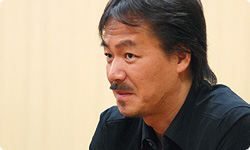
So you’d say you were nervous about the degree to which people were going to respond to what you created, which is vitally important when it comes to mass entertainment. Moreover, this was coupled with the fact that you were attempting to do things in a completely new way.
Yes, that’s right. And this is precisely why I had to lay myself bare this time round.
If you’d done things using your tried and tested methods, you’d have known that if you make something along such and such lines, people would respond in a certain way.
Indeed.
However, this time round, you took a step into uncharted terrain.
That’s right. I had to devise a new method of doing things, all the while with that sense of anxiety that accompanies leaving the old formula behind and not knowing if the new formula would lead to the correct solution.
If you could get rid of that state of anxiety in a rush in about a month from the start of development, it shouldn’t be such tough going. But this was a long project, wasn’t it?
Yes, it really was.
It takes a while for it to become clear how things will turn out, doesn’t it?
That’s why I was always anxious… Though that’s actually quite enjoyable! (laughs)
Right! (laughs)
Something I really felt this time round was that I should enjoy working on this. I mean that in a positive sense, not that I was trying to make this development period my playtime. I think it helps having that slightly unknown element...
So when you work according to a formula, you may feel less anxious about things, but the risk is that work can become rather routine. You don’t get that same sense of excitement.
That’s it.
So in exchange for being less anxious, you get less of a thrill from it, and rather than enjoying working on a project, there's risk that you think of it in terms of: ‘We have to tidy that up, we need to get that done.’ By taking up the gauntlet and doing things in a different way, a certain unease is the price you pay, but you’ll also get a sense of excitement.
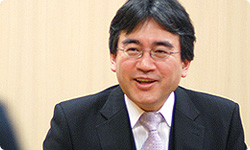
I think that’s right.
I’d like you to tell me more precisely what you mean by that sense of ‘laying yourself bare’ which you mentioned. On this title, you weren’t one step removed from the game’s development. You didn’t have that bird’s eye view of the process. You were right there on the front line, making decisions about the smallest details.
That’s correct. Put simply, I was able to take on the role of director for this title.
And as the director, you felt you had to really lay yourself bare.
Right.
Now, am I correct in thinking that you hadn’t worked as a director since Final Fantasy V4? 4 Final Fantasy V was an RPG first released for the Super Famicom in Japan in December 1992.
Yes, that’s right. There was a period on VI5 when I was in a kind of grey area, where I was doing half the work of a director, but FF V is the last title where I was officially billed as the director. 5 Final Fantasy VI was an RPG first released for the Super Famicom in Japan in April 1994.
Now, Final Fantasy V was released in 1992, which means…
It means that I was the director for the first time in eighteen years. And it turns out being director really works best for me! (laughs)
So it’s the best role for you! (laughs) Miyamoto-san sometimes joins the dev team, and while it seems like gruelling work, he’ll get this spring in his step and say: ‘You can’t beat working with the dev team!’ I think you’re describing the same thing.
Yes. There’s something uniquely rewarding about putting everything else out of your mind and just focussing on the game with the dev team. And when you’re holed up with the team, there are times when you can actually see the things around you more clearly.
So once you join the dev team, things you couldn’t see before become clear.
That’s right. So even if you’re doing the same job, you feel it’s more fun when you’re right there on the front line. I also get the feeling that the excitement of being there with the dev team is communicated to the players. I think the reason the first Final Fantasy6 was able to climb up to that height was that the whole team were just really excited to be making it. 6 Final Fantasy was an RPG released in Japan for the Nintendo Famicom in December 1987.
The excitement of the team ends up going into the game to a large degree. That’s something I’ve actually experienced myself many times: the emotions of the creators entering the game and being communicated to the players.
That’s why I attached a great deal of importance to that feeling this time round. My aim was that the enjoyment I personally had creating the game should be converted into a kind of energy that would be transmitted to the player.
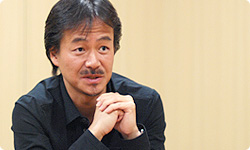
Out of interest, what was the first element you decided on in the process of making The Last Story?
We started with the story and the worldview. I’ve been creating games for twenty-five years, and I’ve always attached great importance to the story. It was no different with this title.
I think the way in which you’ve always made games is to see to what degree that story and worldview can be realised.
Yes, that’s right.
And the environments have evolved to offer you the chance to realise a variety of different ways to express them as time went by…
Well, when I started, it was during the time of the Famicom when the graphics and sound meant that you were limited in what you could do.
All that we could show on the screen were something like rough representations.
That’s right. We had to consider how we should convey the story to the players under such restrictions. Now that high-quality graphics rule supreme, you can reproduce what you want to communicate visually, but at the same time, I don’t know how to put this, but there’s an element that’s slightly excessive about it all…
The player ends up being able to see things you’d have preferred not to show them.
You end up communicating too much to the player. This is why I now feel that we’re at a turning point. With this title, I pressed reset and returned to the basics of what a game is. I started by spending a lot of time considering just what it means to tell a story in a game. But it went beyond simply considering the story side of things – I looked again at the fundamentals on the system side too.
You spent a long period of time looking into those fundamental issues, didn’t you?
We did. That’s why we repeatedly experimented with the system side at the prototype stages of the game’s development. We knew that we wanted something that differed from the way things had been done before. We wanted to express the gameworld and story in a whole new style, and I feel that we gave it absolutely everything we had.
I wonder if this sense of giving it everything you had is reflected in the name ‘The Last Story’.
Yes. Just as we’d done with Final Fantasy, we gave it everything we had, as if this was going to be the last game we ever made. But I must say that this feeling was particularly strong with this title.
So you poured everything into it so there’d be no regrets if this was the last game you ever made.
Precisely. I mean, if I messed it up, I’d be forced to retire… (laughs)
(laughs)
Of course, I want to carry on working creatively for the rest of my life, but when you’re on a project of this size, you need that sense of what it would mean should you fail. At the same time, I wanted to create something where I felt I’d been allowed to give everything I had, where I couldn’t have done more.
I remember hearing that you’d decided on the title from my colleague who was assigned to the project. I felt very strongly that you must really be giving it everything you had.
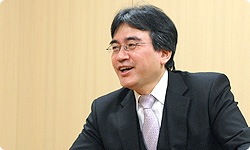
Well, it is the Last Story after all! (laughs)
